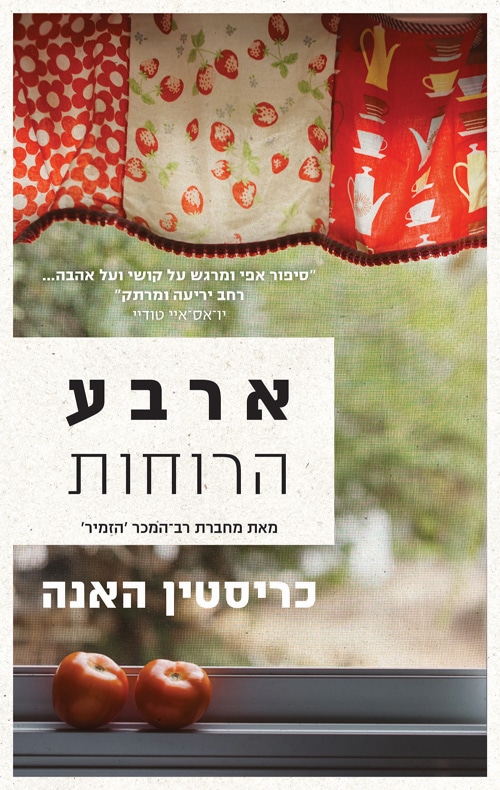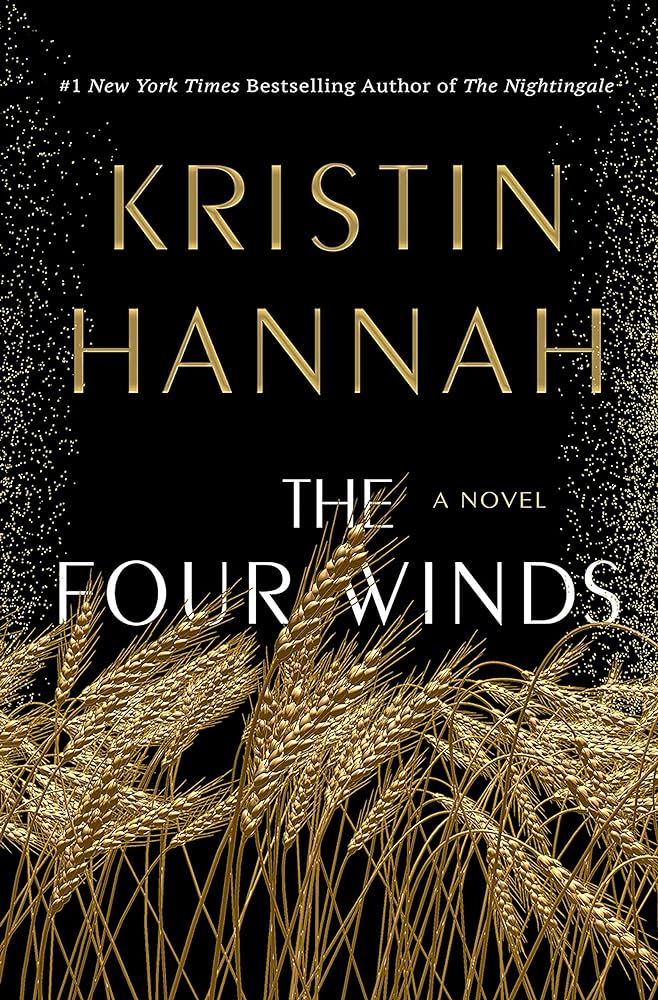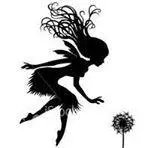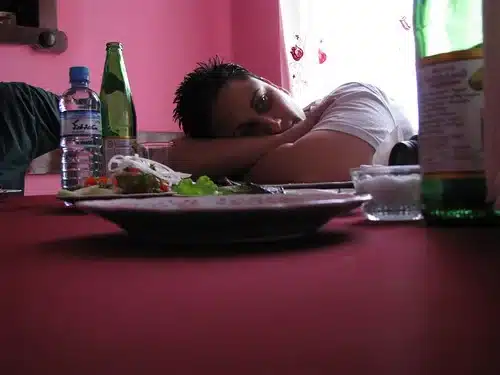For English review, please scroll down.
שנות ה – 30 של המאה ה -20 היו קשות במיוחד לחקלאים בדרום ארה"ב. המשבר בבורסה, הבצורת הגדולה וסופות חול הרסניות שהחריבו את תוואי הקרקע החקלאית, הובילה מליוני חקלאים מדרום ארה"ב לעזוב את אדמתם ולנדוד לכיוון קליפורניה בתקווה למצוא פרנסה.
מליוני אמריקאים עקורים התדרדרו לחרפת רעב ועוני. משפחות התפרקו, בין אם כתוצאה ממוות בשל מחלות ובין אם מנטישת אחד ההורים. ילדים צעירים כמבוגרים עבדו מעל ל 10 שעות בשמש הקופחת בעבודות חקלאיות עבור שכר זעום שלא אפשר להם קיום בסיסי.
סטיינבק תיאר את התקופה הזו בספריו "ענבי זעם" ו- "של עכברים ואנשים".
כריסטין האנה היא לא סטיינבק, אבל היא בהחלט כותבת ראויה וספרה "The Four Winds" חוזר לאותה תקופה אפלה בהיסטוריה האמריקאית. אפלה בעיקר בשל האכזריות וחוסר האנושיות שמתגלים בה.
זהו סיפורה של אלזה, בת למשפחת סוחרים מהמעמד הבינוני עשיר בטקסס. היא "הכבשה השחורה" של משפחתה. נחשבת לחולנית, דחויה ממשפחתה וסובלת מניכור הורי. בגיל 25, הוריה ואחיותיה אינם מאמינים שאלזה תמצא בן זוג, היא נחשבת למכוערת בעינייהם.
אז אלזה פוגשת את, רייף, בנם הצעיר, בן ה 18, של משפחת חוואים איטלקים שהיגרו לארה"ב והצליחו בעשר אצבעותיהם להקים חווה חקלאית. משפחת מרטינלי היא כל מה שמשפחתה לא. היא חמה, אוהבת ומחבקת את בנם שיופיו זוהר למרחוק. הוא נראה כמו מלאך והוא מתכנן לנסוע ללמוד באוניברסיטה.
אבל קיץ אחד בחברת אלזה מוביל לתוצאות לא רצויות וכאשר מתגלה שאלזה בהריון, הוריה דוחים אותה בשאת נפש, ומנתקים איתה את הקשר. אביה מוביל אותה אחר כבוד לחוותם של בני מרטינלי ומסובב לה את הגב ומאז לא ראתה את משפחתה.
בני מרטינלי מתקוממים אבל כאשר בנם מאשר שהיו לו מפגשים עם אלזה, הם מכריחים אותו להינשא לה.
במשך עשור, בני מרטינלי לומדים להכיר את אלזה, כאישה שקטה, חרוצה, מסורה ונאמנה. היא יולדת שני ילדים ועובדת במשק הבית כמו גם בחווה בזמן שהבן של המשפחה ממשיך לחלום חלומות ולהשתכר. זהו העשור הטוב בחייה של אלזה. מכאן הכל רק יתדרדר.
אחרי עשור, מגיעים הזמנים הקשים ואז מגיעים זמנים קשים יותר. השפל כלכלי הגדול עוד היה נסבל, אבל כשהחלו סערות החול המצב הסלים והתדרדר בצורה קשה.
לילה אחד בעלה רייף עוזב ונעלם. היא ממשיכה להאבק לשרוד יחד עם בני הזוג מרטינלי. סופות חול אדירות מטלטלות את הקיום שלהם שגם כך רעוע. הם ישנים עם מסכות גז כדי להימנע מנשימת חול ובכל זאת באחת הסופות הילד הצעיר, אנט, נושם כל כך הרבה חול, שהוא על סף מוות מדלקת ראות שנגרמה משאיפת יותר מידי חול. הם חסרי אמצעים, סובלים מרעב קשה ולאחר הסופה השחורה, לא נותר דבר בחווה.
אלזה מחליטה שכדי להציל את ילדיה לורדה ואנט, היא חייבת לעזוב לקליפורניה.
מהדורה בעברית:
ארבע הרוחות/ כריסטין האנה
מודן, 2022, 512 עמודים

היא אופטימית, עד שהיא נתקלת במקומיים שמכנים אותה ואת ילדיה בשם אוקי'ס ומסרבים להשכיר להם חדר. מתייחסים אליהם כאשפת האנושות ומבזים אותם. הבורות והדעות הקדומות מתחילים בטיפטופים, אבל מתגברים עד שהם מתנחשלים כגלים שמטביעים את החלק האחרון של הספר.
האכזריות של בני האדם נובעת מבורות ומדעות קדומות. היא משקפת את הדימוי של הנוודים כטפילים החיים על חשבון החוואים והציבור בקליפורניה.
זה לא משנה למקומיים, שכאשר כבר נמצאת עבודה, השכר זעום ומביש ולא מאפשר תנאי מחייה מינימליים. מנצלים אותם ללא רחמים ומפשיטים אותם מכל צלם אנוש כאשר הם שוב ושוב נדחפים אל פת לחם דלה ע"י חבורת חוואים ופוליטיקאים חסרי מצפון.
הנוודים שרוצים לעבוד ולא לקבל תרומות אינם מרימים קולם וסופגים את החבטות בזו אחר זו. הממשלה, קובעת חוקים פוגעניים ע"י כך שהיא שוללת מהם את קצבת קיום שמשתלמת רק לאחר שנה של מגורים בקליפורניה. עד אז לא מאפשרים לאלזה ומשפחתה לקבל קצבה. גם לא בעונת החורף הקשה שבה אין קטיף. אבל המדינה מרחיקת לכת ועוזרת לחקלאים ע"י כך שהיא שוללת את הקיצבה ממי שמסוגל לקטוף.
זהו אורובורוס, מעגל שלא ניתן לשבירה ומזין את עצמו.
הנוודים חיים בתת תנאים מעוררי פלצות. מאות ואלפי משפחות שמתגוררות באוהלים ללא סטינטציה וללא שירותים רפואיים, ללא מזון וללא עבודה. כאשר הם נזקקים לשירותים רפואה דחופים, בית החולים העירוני מסרב להעניק להם אותם. הספר כולל שלוש סצנות שיורדות לעומק חוסר האנושיות, האדישות והניכור החברתיים. מחפיר ומביש אלה מילים לא מספיק חזקות לתאר את הסצנות המטלטלות האלה.
כאשר השיטפון לוקח את כל רכושם המועט על האדמה, אלזה וילדיה עוברים להתגורר בחווה חקלאית. אולם, שם הבעלים של החווה גורם להם לשקוע בחובות נושאי ריבית נשך מהם לא יוכלו להשתחרר. הם לא יכולים לרכוש מוצרים במחירים נמוכים כי אין להם כסף ומאידך, כאשר יש להם כסף מהקטיף הם לא יכולים לשלם את חובם. זהו חוב דמים שניתן לכסותו רק בקטיף כותנה.
החלקים שעוסקים בשנת 1935 ו- 1936, מציירים מפה של אסון הומניטרי לא מנוהל. מעטים מפגינים כלפיהם נדיבות או אדיבות ואלה שברירים של אנושיות בים של סבל.
קראתי בסקירות שכתבו על הספר שאלזה מזכירה את איוב כאשר שוב ושוב ניתכים עליה אסונות בלתי נתפסים בזמן שהיא שומרת על צניעות וענווה בפני היקום שמכה בה. חלק טענו שהסופרת יצרה קרירטורות שטוחות, ארכיטיפים של דמויות שיתכן שהתקיימו במציאו. קראתי גם שאנשים התמרמרו עד כמה מדכא הספר.
אני בהחלט מבינה, יש משהו מאוד מתסכל במעגל הסבל האינסופי הזה. יש משהו מאוד מדכא בקריאת ספר על חיים אומללים בשוליי החברה. הרבה יותר נעים להתעלם מכל האומללות הזו.
יחד עם זאת, לטעמי, הדמות של אלזה, היא דמות בלתי נשכחת. היא אמיצה, לוחמת, נאמנה, אנושית וערכית. זה לא ניכר בחלק הראשון והשני של הספר, אבל זה בהחלט ניכר בחלק שעוסק בשנת 1936.
כריסטין האנה מזכירה לקורא עד כמה קשה לשמור על אנושיות במצבים קשים וקיצוניים. היא מזכירה לנו, שמאוד קל להסב את הראש הצידה לצער וסבל של אחר.
היא יצרה דמות מרגשת שמצליחה לגעת בשיכבה הרכה למרות תנאי ההתחלה האיומים שהיא סובלת מהם. אני לא מתביישת לכתוב שבמספר מקומות בספר הזלתי דמעות.
אסיים בכך שקראתי חלקים מהספר גם בתרגום לעברית, והוא תרגום טוב מאוד. אי אפשר לכתוב על ספר כזה רוצו לקרוא, אבל בהחלט זה ספר ראוי לקריאה אחד מהספרים העוצמתיים והחזקים שקראתי השנה.
The Four Winds / Kristin Hannah
Kindle Edition, 464 pages, 2021
דירוג SIVI –
איכות אודיו –

During the 1930s, farmers in the southern United States faced numerous challenges. The stock market crisis, a severe drought, and destructive sandstorms that ruined farmland caused millions of farmers to abandon their land and migrate to California for a better life.
Millions of Americans who were displaced from their homes were forced to endure the indignity of poverty and hunger. Families were torn apart due to the death of loved ones from diseases or because one of the parents had to abandon the family in search of work. Children, some as young as adults, toiled in the fields for over 10 hours a day under the scorching sun, earning meager wages, barely enough to sustain their basic needs.
Steinbeck chronicled this era through his novels "The Grapes of Wrath" and "Of Mice and Men."
Christine Hanna is not Steinbeck, but her book "The Four Winds" illuminates the cruelty and inhumanity of a dark time in American history.
This is the story of Elsa, the daughter of a wealthy, middle-class merchant family in Texas. She is considered the "black sheep" of her family, as she is sickly and has been rejected by them. Due to parental alienation, she has a hard time connecting with them. Despite being 25 years old, her parents and sisters do not believe that Elsa will find a partner as they consider her unattractive.
Elsa meets Rafe, an 18-year-old boy, the youngest son of an Italian family that immigrated to the US. The Martinelli family is everything that Elsa's family is not. They are warm and loving and embrace their son, whose beauty shines from afar. Rafe looks like an angel, and he plans to go to university. The Martinelli family succeeded in establishing a farm with their ten fingers.
One summer, Elsa becomes pregnant, and her parents react disgustingly, cutting off all ties with her. Her father leaves her at the Martinelli's farm, and she hasn't seen her family since.
The Martinellis are disgusted; however, when their son confesses to having slept with Elsa, they compel him to marry her.
The Martinellis got to know Elsa over a decade ago. She was known to be a quiet, hardworking, dedicated, and loyal woman. During this time, Elsa gave birth to two children and worked both in the household and on the farm. Unfortunately, the family's son continued to indulge in drinking and dreaming dreams. Despite this, Elsa considers this decade the best time in her life. However, she is unaware that things will only get worse from here on.
After ten years, times got tough, and then they got worse. The Great Depression was bearable, but when the sandstorms hit, the situation deteriorated severely.
One night, Elsa's husband, Rafe, abruptly leaves and disappears. She is left to struggle to survive alongside the Martinellis. Their already precarious existence is further shaken by huge sandstorms that require them to sleep with gas masks to avoid inhaling sand. Despite this precaution, her young son, Ant, inhales so much sand during a storm that he becomes critically ill with ophthalmia. Penniless and suffering from severe hunger, the farm is left with nothing after a particularly devastating black storm.
Elsa leaves for California to save her children, Loreda and Ant.
She is optimistic until she meets the locals who call her and her children Okies and deny them a room to rent. They are treated as the lowest form of humanity and are despised. The ignorance and prejudices start with small ripples, but they gradually intensify until they become waves that engulf the last part of the book.
Ignorance and prejudice drive human cruelty, such as portraying nomads as parasitic in California.
It doesn't matter to the locals that their salary is meager and insufficient to support primary living conditions even after finding a job. They are mercilessly exploited and treated inhumanely by unscrupulous farmers and politicians, who force them to exist on poor-quality bread.
Some vagabonds want to work for a living rather than rely on donations, but they often remain silent and endure mistreatment. The government has passed laws that harm these individuals, such as depriving them of the subsistence allowance. This allowance is only granted after a year of residence in California, which means that Elsa and her family are not eligible to receive it. They are even denied assistance during the harsh winter season when there is no harvest. Additionally, the state helps farmers by withholding the allowance from those capable of working as pickers.
This is Ouroboros, an unbreakable and self-sustaining circle.
Hundreds and thousands of families live in tents without necessities like sanitation, medical services, food, and work. The municipal hospital refuses to provide the necessary care even when they require urgent medical attention. The book contains three scenes that reveal the depth of inhumanity, indifference, and social alienation. These scenes are so appalling that words like shameful don't seem strong enough to describe them.
After their possessions were lost in a flood, Elsa and her children had to move to a farm. Unfortunately, the farm owner charged them high-interest rates, which resulted in them accumulating debt they couldn't repay. Due to their financial situation, they couldn't afford to buy products at low prices, and even when they had money from the harvest, they couldn't use it to pay off their debt. This caused them to become trapped in a cycle of debt that they could only break by picking cotton.
The sections relating to 1935 and 1936 depict an uncontrolled humanitarian crisis. Only a few extend kindness, while most suffer in despair.
I came across some reviews of a book in which the protagonist, Elsa, was compared to Job. She faced unimaginable disasters one after the other yet maintained her modesty and humility. Some argued that the author created flat caricatures of characters that may have only existed in his imagination. On the other hand, some people have praised the book for depicting despair, while others have criticized it for being too depressing.
I completely understand how frustrating it can be to feel stuck in a cycle of suffering. It can be really disheartening to read about people living in miserable circumstances on the outskirts of society. Sometimes, it's easier to ignore all of that pain and misery.
In my opinion, Elsa's character is unforgettable. She is brave, a warrior, loyal, humane, and moral. Although these traits were not evident in the first and second parts of the book, they are certainly apparent in the section dealing with 1936.
Christine Hanna reminds readers how difficult it is to maintain humanity in extreme situations and how easy it is to ignore the suffering of others.
She created an emotionally compelling character who despite her terrible circumstances, manages to touch the reader's heart. I am not ashamed to admit that in several parts of the book, I shed tears.
I want to add that I have read some parts of the book in its Hebrew translation, and I must say that it is an excellent translation. Describing a book one wishes to read can be challenging, but I highly recommend this masterpiece. It is one of the most powerful and moving books I have read this year.
לגלות עוד מהאתר Sivi's Books
Subscribe to get the latest posts sent to your email.

